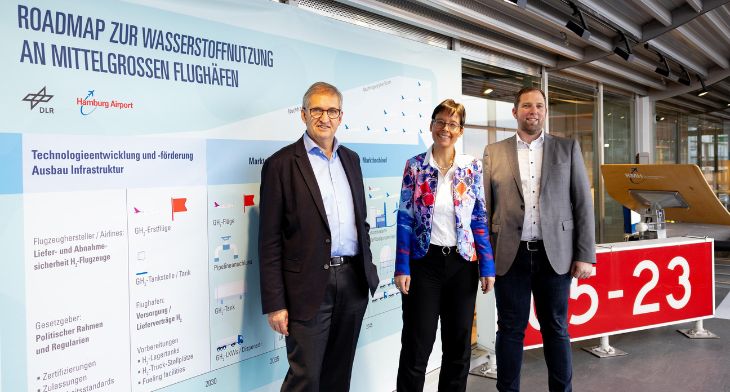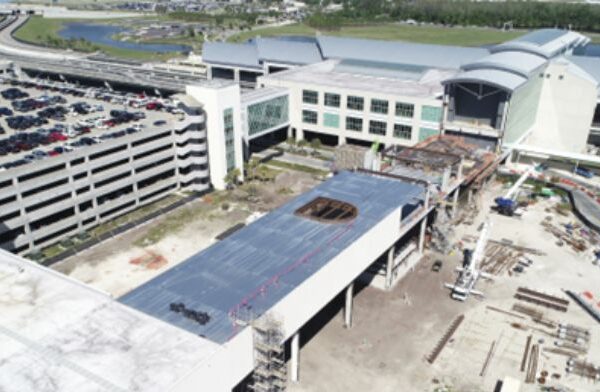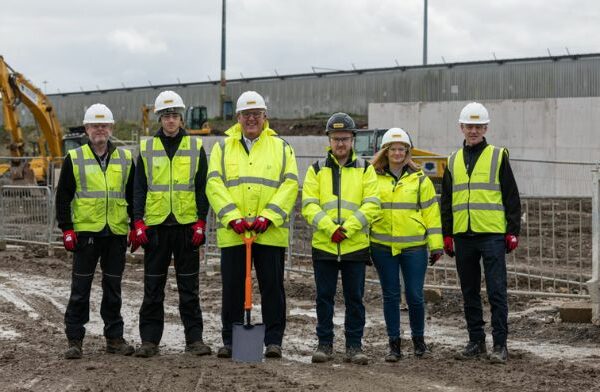


The German Aerospace Center (DLR) has joined forces with Hamburg Airport to present a roadmap that establishes the steps required to develop hydrogen infrastructure at medium-sized airports. Part of the Networked Mobility for Liveable Places(VMo4Orte) project, Hamburg will be used as an example of how the introduction of hydrogen could be operationally feasible and economically viable for airports of a similar or smaller size.
Hydrogen is expected to play a key role as an energy carrier in the future, particularly for short-haul and regional aircraft as well as medium-haul flights. Complementing the technological development of aircraft, the provision of the infrastructure, the adaptation of airport processes and ensuring the availability of hydrogen are important prerequisites for success. The roadmap presented by DLR and Hamburg covers the expected demand for hydrogen, the design of the hydrogen supply system and the expected costs from today’s perspective practical aspects such as the adaptation of airport infrastructure and the necessary operational changes.
“Networked mobility for liveable places is an important guiding principle for DLR,” said Prof. Meike Jipp, DLR Divisional Board Member for Energy and Transport. ” We are developing ideas for vehicle and mobility concepts together with partners from industry, local authorities and transport companies. Airports are important hubs that can make a significant contribution to transforming the transport system and creating liveable places.”
Forecasting by the DLR Institute of Air Transport on hydrogen demand at German airports shows that, assuming that the correct course is set by policymakers and airlines, approximately 19 million tonnes of kerosene used by air transport from Germany could be replaced by 6.6 million tonnes of green hydrogen by 2050, which corresponds to a saving of almost 60 million tonnes of CO2. The different in the comparison is due to the higher energy density of hydrogen compared to kerosene.
Hamburg’s route network focused on short and medium-haul flights combined with its connections to the North Sea, Baltic Sea and port of Hamburg, make the regional airport an ideal candidate for the introduction of hydrogen. The air transport hub is also already focused on transitioning ground services and flight operations to hydrogen.
Michael Eggenschwiler, Chair of the Executive Board at Hamburg Airport said: “We want the energy transition in aviation. There is no way around hydrogen. For this reason, we are already involved in several projects that will make a significant contribution to the switch to this clean energy source. If we want to enable the use of this new technology, we need to ensure that the infrastructure is developed and ready for use when the first aircraft take off. This requires not only the willingness of the airport and the aircraft developers, but also of politicians – this is the only way we can set the necessary course together today.”
According to the VMo4Orte project, the first short-haul hydrogen propulsion flights are expected to be possible as early as the next decade with the industry planning to introduce hydrogen aircraft for medium-haul flights before 2040. By 2050, the proportion of departures with hydrogen aircraft in Hamburg could rise to 60%. This corresponds to an annual hydrogen requirement at Hamburg of 60,000 tonnes, with a correspondingly significant reduction in CO2. Beyond 2050 up to 80% of current flight movements at the regional airport could be carried out with hydrogen-powered aircraft.
While the first few years up to 2040 will see hydrogen most likely to be supplied in small quantities using special tanker trucks, with an additional supply by pipeline as demand increases. As aircraft will primarily require hydrogen in liquid form for refuelling, a liquefaction plant will also be required at the airport. In addition to the space required, such a plant will require substantial investments and a large renewable electricity supply.
Jan Eike Blohme-Hardegen, Head of the Environment Department at Hamburg explained: “The supply and storage of the amount of hydrogen required in the future will require a completely new infrastructure at our airport. We need to start preparing and building this infrastructure now if we want to establish climate-friendly propulsion systems for air transport in the near future.”





